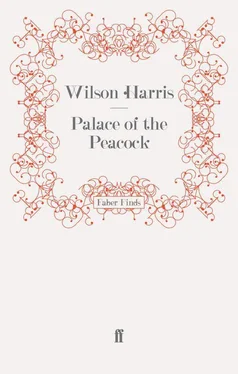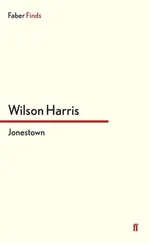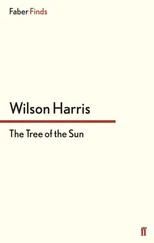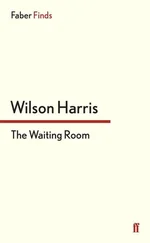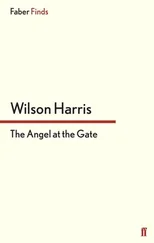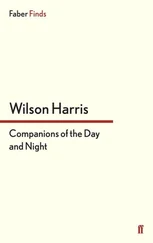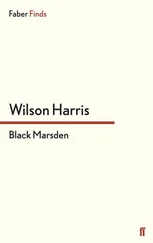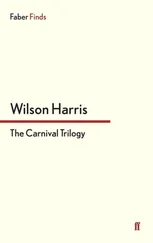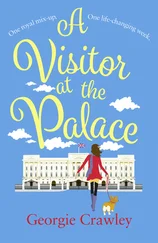Wilson Harris - Palace of the Peacock
Здесь есть возможность читать онлайн «Wilson Harris - Palace of the Peacock» весь текст электронной книги совершенно бесплатно (целиком полную версию без сокращений). В некоторых случаях можно слушать аудио, скачать через торрент в формате fb2 и присутствует краткое содержание. Год выпуска: 2013, Издательство: Faber Finds, Жанр: Современная проза, на английском языке. Описание произведения, (предисловие) а так же отзывы посетителей доступны на портале библиотеки ЛибКат.
- Название:Palace of the Peacock
- Автор:
- Издательство:Faber Finds
- Жанр:
- Год:2013
- ISBN:нет данных
- Рейтинг книги:5 / 5. Голосов: 1
-
Избранное:Добавить в избранное
- Отзывы:
-
Ваша оценка:
- 100
- 1
- 2
- 3
- 4
- 5
Palace of the Peacock: краткое содержание, описание и аннотация
Предлагаем к чтению аннотацию, описание, краткое содержание или предисловие (зависит от того, что написал сам автор книги «Palace of the Peacock»). Если вы не нашли необходимую информацию о книге — напишите в комментариях, мы постараемся отыскать её.
Palace of the Peacock — читать онлайн бесплатно полную книгу (весь текст) целиком
Ниже представлен текст книги, разбитый по страницам. Система сохранения места последней прочитанной страницы, позволяет с удобством читать онлайн бесплатно книгу «Palace of the Peacock», без необходимости каждый раз заново искать на чём Вы остановились. Поставьте закладку, и сможете в любой момент перейти на страницу, на которой закончили чтение.
Интервал:
Закладка:
When it is too late to make a difference to our involvement, the novel speaks to us about its assumption that waking and dreaming, the living and the dead, can exist side by side: “The odd fact existed of course that their living names matched the names of a famous dead crew that had sunk in the rapids and been drowned to a man, leaving their names inscribed on Sorrow Hill which stood at the foot of the falls. But this in no way interfered with their life-like appearance and spirit and energy.”
Although this vivid and matter-of-fact crew are driven by their own separate lusts, they are united in pursuit of gold and the Indians (“the folk”) who can serve as guides and slaves. They are heading towards a mission or inland station called Mariella. In the journey beyond Mariella, which takes seven days, they press-gang an old Amerindian woman as their guide. Their captain is the rapacious Donne. The boat eventually crashes and is abandoned at the foot of a breathtaking waterfall, and the crew ascend the steep sides of the cliff to look out and in from the windows of the palace of the universe.
The ascent to the palace comes after the death of Carroll, who slips and falls into the water. This death comes over as a sacrifice, and it is associated with the emergence of an ancient music. The novel tells us that the eyes and ears of the crew are suddenly opened to the possibilities of wholeness: “In an instant it were as if we saw with our own eyes as well as heard with our own ears an indestructible harmony within the tragedy and sorrow of age and the malice and the nature of youth. It was Carroll’s voice that turned to stone and song, and the sadness of the baptismal lamentation on his lips which we heard in the heart of the berserk waters was our own almost senseless rendering and apprehension of the truth of our art and our perfection in the muse.” It is interesting that in a note to the 1988 re-issue of Palace of the Peacock, Harris plays on Carroll’s music, linking its function to that of the Carib bone flute which he read about years after writing the Guyana novels. This tells us something about the intuitive process involved in creation and about the hidden order in art, both of which give Harris’s writings their unpredictable imagery and insights.
From the start this kind of difference between Harris’s work and the productions of his contemporaries drew attention to itself. The difference in artistic disposition is connected with differences in attitudes to history. Summing up in 1970 the Harris oeuvre up to The Waiting Room (1967), I wrote that “the ground of loss or deprivation with which most West Indian writers and historians engage is not for Harris simply a ground for protest, recrimination and satire; it is visualised through the agents in his works as an ambivalent condition of helplessness and self-discovery, the starting-point for new social structures … Susan Forrestal, blind, helpless and deprived, involved in The Waiting Room in the development of new resources and capacities for relationships with people and things, becomes the exciting ambivalent emblem of a so-called ‘hopeless’, ‘historyless’ West Indian condition.” Harris was concerned with West Indian history but was trying to move away from the usual attitudes. The link between Susan’s blindness and the blindness theme in Palace is another illustration of the continuity between the first novel and the later ones.
But we are now many years away from Palace of the Peacock and the Guyana novels. Since 1960, there have been another twenty books, with interesting titles like Da Silva DaSilva’s Cultivated Wilderness, The Infinite Rehearsal, Resurrection at Sorrow Hill and The Four Banks of the River of Space. In addition there is a lot of writing about his work, including his own essays and lectures. I have picked out these titles to point to an important connection.
Palace of the Peacock is about resurrection or overcoming death. From the first novel to the last, this is the author’s rich, liberating and infinite theme. On arrival at Mariella, the ardent dreamer suggests to the troubled Donne that someone must broach the subject of death’s supposed finality and terror. This novel shows Donne and the crew dying and coming back several times. The title of the twentieth novel, set on the same river where Donne’s crew is supposed to have drowned, is Resurrection at Sorrow Hill. What is this all about? In an earlier book, the character Robin Redbreast Glass, whose autobiography is the matter of The Infinite Rehearsal (1987), articulates a confession that pushes the reader to see the cycle of death and resurrection as a kind of play of shadow and light. Harris had obviously begun to feel a need to articulate and conceptualise the revelance of what is referred to in Palace as “acknowledging the true substance of life”, and demonstrating “the unity of being”.
According to Glass, “the hope for a universally just society, for the attainment of the mind and heart of love, the genius of care — are an impossible dream …” He insists, nevertheless, that these values associated with the dream of unity and wholeness are true. The reader realises that there are implications in this for how we create art, and for how we live our lives: the impossibility of final achievement actually “nurses, prompts, gives reality to the creative imagination and instils one with profoundest paradox, with insight into the numinous character of all things, all features, all aspects of being.”
In this light, each life is or is like a work of art, part of an infinite set of rehearsals approaching again and again “a sensation of ultimate meaning residing within a deposit of ghosts”. Glass’s ghosts relate to conqueror and conquered without exacerbating adversarial proportions, and they relate harmonisingly to “new worlds and old worlds, new forests and old forests, new stars and old constellations within the workshop of the gods”.
Many critics compare Harris and Conrad, so it is perhaps in order to add: Harris’s work, like that of Conrad before him, “gives reality to the creative imagination and” (the words come from Robin Redbreast Glass) “instils one” (the reader and the intuitive author) “with profoundest paradox, with insight into the numinous character of all things, all features, all aspects of being.” In the work of both authors there are repeated illustrations of the coexistence and interdependence of opposites. And in both there is no ambiguity about the human imperative arising from that: “A man that is born falls into a dream, like a man who falls into the sea. If he tries to climb out into the air as inexperienced people endeavour to do, he drowns — nicht war ? … No! I tell you! The way is to the destructive element submit yourself, and with the exertions of your hands and feet in the water make the deep, deep sea keep you up.” The quotation is from Lord Jim. But this is exactly the kind of courageous immersion that Harris’s work encourages.
It would be foolish not to take account of the critics or of Harris’s commentary on what he later discovers in his own work. But an innocent voyage can be exciting. The ambushed horseman is called Donne. The person who has shot him off his galloping steed is Mariella, an Amerindian woman he had seduced above the waterfall. This we gather from our initial guide, the narrating person, the one who is telling the story. In the second paragraph of the novel, the narrating person walks towards the dead man. He is aware that someone is watching him and the dead man, watching them from the ominous trees and bushes out of which the bullet had swirled.
In this novel, Harris uses a technical device known as a first-person narrating character or I-narrator. We know that when this device is used, the I-narrator is usually one of the main characters or the main character, and the book is likely to be about some process or peculiarity in this person. But in his 1964 lecture “Tradition and the West Indian Novel”, published in Tradition, the Writer and Society (1967), Harris criticises what he calls “the novel of persuasion”, the mimetic novel that makes a selection of items (manners, conversation, historical situation, etc.) in order “to build and present an individual span of life which yields self-conscious and fashionable judgments, self-conscious and fashionable moralities.” All of this, he suggests, takes place “on an accepted plane of society we are persuaded has an inevitable existence.” It therefore consolidates a materialist reading of the world.
Читать дальшеИнтервал:
Закладка:
Похожие книги на «Palace of the Peacock»
Представляем Вашему вниманию похожие книги на «Palace of the Peacock» списком для выбора. Мы отобрали схожую по названию и смыслу литературу в надежде предоставить читателям больше вариантов отыскать новые, интересные, ещё непрочитанные произведения.
Обсуждение, отзывы о книге «Palace of the Peacock» и просто собственные мнения читателей. Оставьте ваши комментарии, напишите, что Вы думаете о произведении, его смысле или главных героях. Укажите что конкретно понравилось, а что нет, и почему Вы так считаете.
